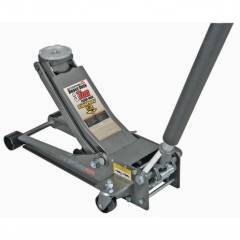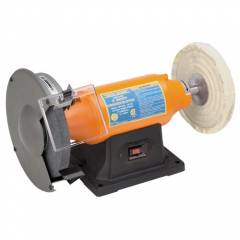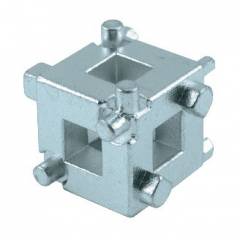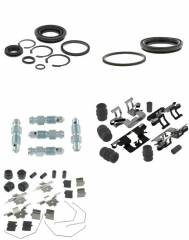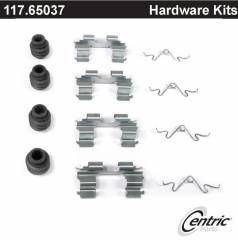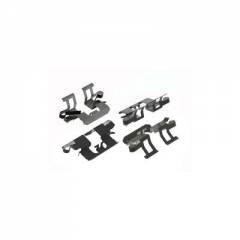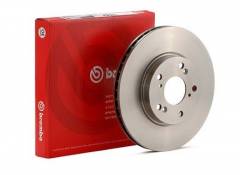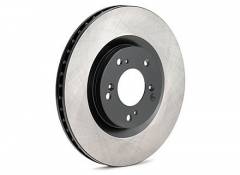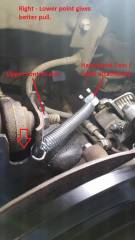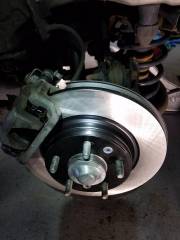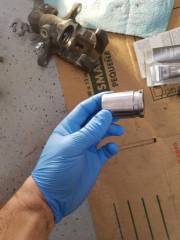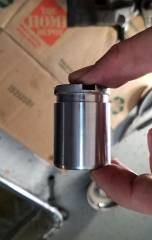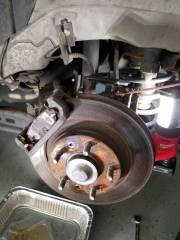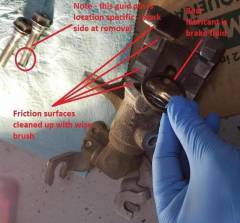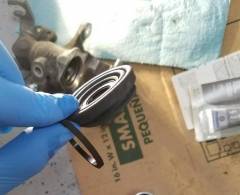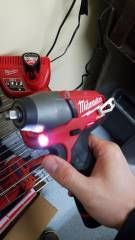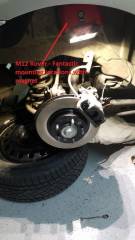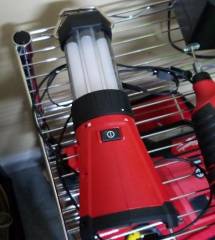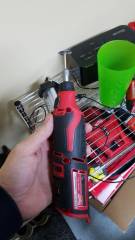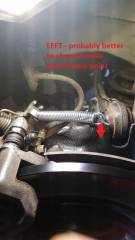
mcroni19
Fusion Member-
Posts
44 -
Joined
-
Last visited
-
Days Won
1
mcroni19 last won the day on June 27 2021
mcroni19 had the most liked content!
Profile Information
-
Region
U.S. Mountain
-
My Fusion
2010
Recent Profile Visitors
mcroni19's Achievements
Newbie (1/14)
2
Reputation
-
 StretchAWreck reacted to a post in a topic:
Parking/Emergency Brake cable replacement
StretchAWreck reacted to a post in a topic:
Parking/Emergency Brake cable replacement
-
 BlackMagnum reacted to a post in a topic:
Parking/Emergency Brake cable replacement
BlackMagnum reacted to a post in a topic:
Parking/Emergency Brake cable replacement
-
Please view my thread posted today - Adding this post mainly to help other people find the fix, I know this is years after the OP's problem occurred. http://www.fordfusionforum.com/topic/16720-frozenstuck-parking-brake-with-fix-fusion-milan-2010/?p=97824
- 14 replies
-
- parking brake
- release button stuck
- (and 3 more)
-
yes this is normal - esp on the hybrid models - the heater pulls a lot of heat off the engine, and has its own separate coolant circuit and motor (hybrid model). I have had the hybrid have to continually run just to keep the heater going, even without the AC on. This is directly a heat issue. there is just not enough stored heat (as in a V8 Model) to keep the heater on indefinitely. again more pronounced in the hybrid. If your car heats up and operates in normal range at other times the most likely answer is the heater bleeding off too much. If the car does not get to operating temperature then I would seek out expert opinion regarding the thermostat.
-
Fan works - no flow out vents intermittently
mcroni19 replied to dickey brazil's topic in A.C. & Heating
Check out the blower motor and wires. this is a common problem... The problem is the blower motor uses brass bushings. they wear out and cause the motor to pull more amps, that leads to burning out the wires between the motor and the resistor, which in turn blows the resistor. Symptoms of a blown resistor is intermittent function and eventually no function. The wires do get hot enough to cause a small electrical fire if not corrected. Quick test - reach down and grab the wires to the resistor when the unit is running if they are hot you are in store for a replacement soon...they should not be hot. if they make you want to take your hand off the wires ... have the parts shipped in. If your blower works intermittently have the parts shipped in. save yourself the grief and get all three done at the same time. I replaced them separately trying to avoid splicing the wires but in the end I blew two resistors before I stopped resisting....change all three at once. parts https://www.amazon.c...0?ie=UTF8&psc=1 https://www.amazon.c...1?ie=UTF8&psc=1 https://www.amazon.c...0?ie=UTF8&psc=1 I have used all three of those - I also purchased one resistor from the stealership at $290 - only to have it fail because I didn't correct the issue the first time. whole project is easy to do and takes about 1 hr...unless you're savvy at wiring or have done it previously because you refuse to change all three. -
I would advise changing all three parts - The problem is the blower motor uses brass bushings. They wear out and cause the motor to pull more amps (and cause the annoying clicking) 9 times out of 10. If you have solved your problem with changing position or cleaning out your motor housing then ignore the rest of my post, if it came back after a few weeks.... read on. When the bushings wear out they make noise and cause the motor to pull more amps that leads to burning out the wires between the motor and the resistor, which in turn blows the resistor. save yourself the grief and get all three done at the same time. I replaced them separately trying to avoid splicing the wires but in the end I blew two resistors before I stopped resisting....change all three at once. Quick test - reach down and grab the wires to the resistor when the unit is running if they are hot you are in store for a replacement soon...they should not be hot. if they make you want to take your hand off the wires ... have the parts shipped in. If your blower works intermittently have the parts shipped in. parts https://www.amazon.com/gp/product/B018I7LAW8/ref=oh_aui_detailpage_o00_s00?ie=UTF8&psc=1 https://www.amazon.com/gp/product/B00OAKY76Y/ref=oh_aui_detailpage_o00_s01?ie=UTF8&psc=1 https://www.amazon.com/gp/product/B0145AMQ2U/ref=oh_aui_detailpage_o07_s00?ie=UTF8&psc=1 I have used all three of those - I also purchased one resistor from the stealership at $290 - only to have it fail because I didn't correct the issue the first time. whole project is easy to do and takes about 1 hr...unless you're savvy at wiring or have done it previously because you refuse to change all three.
-
I would advise changing all three parts - The problem is the blower motor uses brass bushings. they wear out and cause the motor to pull more amps, that leads to burning out the wires between the motor and the resistor, which in turn blows the resistor. save yourself the grief and get all three done at the same time. I replaced them separately trying to avoid splicing the wires but in the end I blew two resistors before I stopped resisting....change all three at once. Quick test - reach down and grab the wires to the resistor when the unit is running if they are hot you are in store for a replacement soon...they should not be hot. if they make you want to take your hand off the wires ... have the parts shipped in. If your blower works intermittently have the parts shipped in. parts https://www.amazon.com/gp/product/B018I7LAW8/ref=oh_aui_detailpage_o00_s00?ie=UTF8&psc=1 https://www.amazon.com/gp/product/B00OAKY76Y/ref=oh_aui_detailpage_o00_s01?ie=UTF8&psc=1 https://www.amazon.com/gp/product/B0145AMQ2U/ref=oh_aui_detailpage_o07_s00?ie=UTF8&psc=1 I have used all three of those - I also purchased one resistor from the stealership at $290 - only to have it fail because I didn't correct the issue the first time. whole project is easy to do and takes about 1 hr...unless you're savvy at wiring or have done it previously because you refuse to change all three.
-
I would advise changing all three parts - The problem is the blower motor uses brass bushings. they wear out and cause the motor to pull more amps, that leads to burning out the wires between the motor and the resistor, which in turn blows the resistor. save yourself the grief and get all three done at the same time. I replaced them separately trying to avoid splicing the wires but in the end I blew two resistors before I stopped resisting....change all three at once. Quick test - reach down and grab the wires to the resistor when the unit is running if they are hot you are in store for a replacement soon...they should not be hot. if they make you want to take your hand off the wires ... have the parts shipped in. If your blower works intermittently have the parts shipped in. parts https://www.amazon.com/gp/product/B018I7LAW8/ref=oh_aui_detailpage_o00_s00?ie=UTF8&psc=1 https://www.amazon.com/gp/product/B00OAKY76Y/ref=oh_aui_detailpage_o00_s01?ie=UTF8&psc=1 https://www.amazon.com/gp/product/B0145AMQ2U/ref=oh_aui_detailpage_o07_s00?ie=UTF8&psc=1 I have used all three of those - I also purchased one resistor from the stealership at $290 - only to have it fail because I didn't correct the issue the first time. whole project is easy to do and takes about 1 hr...unless you're savvy at wiring or have done it previously because you refuse to change all three.
-
Another Fusion with rear brake problems
mcroni19 replied to nova_gh's topic in Brakes, Chassis & Suspension
Consider the stuck brake caliper - read through that section of my post this morning - Not sure if this applies on years past 2011 - such a common problem I thought I would give my 2c http://www.fordfusionforum.com/topic/16720-frozenstuck-parking-brake-with-fix-fusion-milan-2010/?p=97824 -
simple answer to a complicated question - Milan Hybrid 2010 - changed everything out at 105000 mi. Had some pad life left - changed due to sticking rear calipers and handbrake.
-
New Brakes Grinding into New Rotors
mcroni19 replied to SavantFusion's topic in Brakes, Chassis & Suspension
I just did my rear brakes on a 2010, doing the fronts when my pads get shipped - I remember on the rears there was a difference between the guide pins. Not sure if that is true on the fronts. one had a rubber bushing on the end, one did not. Also maybe check to see that your release springs are properly placed and the brake hardware is not contacting the rotors. The clue should be in the rotor if its a constant grinding. What are the chances of a small piece of metal stuck in the pad material? Maybe post some pictures to see how things are going. -
Rear wheel bearing noisy only 61k.
mcroni19 replied to jcd302's topic in Brakes, Chassis & Suspension
just a thought? is it bearing noise or have the rear brakes locked up on you? watch your rotors. I would think the brakes are much more common problem than the bearing. If you find it is the brakes please read my fix. http://www.fordfusionforum.com/topic/16720-frozenstuck-parking-brake-with-fix-fusion-milan-2010/?p=97824 -
Brake Bleeding Advice Needed
mcroni19 replied to cowmilker08's topic in Brakes, Chassis & Suspension
Follow the directions as stated above - starting with the farthest caliper. that was good advice to bleed ANY time you open the system, no matter how long it is open. Don't take a chance with your brakes. When bleeding the brakes - just go buy some 1/4 tubing from home depot and get yourself a jar. place the tube under the surface of brake fluid in the jar. You can bleed by yourself without spending a ton of money. I would recommend bleeding with the ignition off. The car will send all kinds of errors and the master cylinder seemed to suck fluid back in so fast it would trap air. Don't be shy with bleeding - get ALL the air out - go till no bubbles are seen, and then do a few more. another thought - did the rear pads get positioned correctly - the piston on the rear pads is meant to contact at a specific point and line up with the small notch on the back of the pad. You may also need to cycle your parking brake a few times to get the pads adjusted properly after running the caliper piston back in all the way. -
Rear Brakes worn out after 18,000 miles!!
mcroni19 replied to Hanellen02's topic in Brakes, Chassis & Suspension
Please see my post http://www.fordfusionforum.com/topic/16720-frozenstuck-parking-brake-with-fix-fusion-milan-2010/?p=97824 -
Car: 2010 mercury Milan Hybrid 105,000 mi – gas mileage around 32-34 2/2 heavy foot syndrome Problem: Sticking Parking Brake Topics: Test – do coated rotors last any longer than uncoated? Test – Do semi metallic centric pads vs centric ceramic pads? Tips on brake change and caliper reman. Write up on fixing sticky parking brake. A little review on some tools I used to help get the job done! I will make each section clear so that if you want to skip ahead you can. I have a 2010 mercury Milan hybrid – functionally identical to the fusion hybrid from the same year. These vehicles also share many parts between years 2006 and 2011. In my research, I have also found that the same caliper or similar set up used in Honda civics as well as a few VW products. I mention them to help as many people as possible with this problem. This type of caliper is used on many vehicles. Problem Detail: I started this project because my rear brakes were sticking whenever I used my parking brake. They would release however it would take about 45 min or so. The symptom seemed to get worse in the winter time giving the impression that the brakes would “FREEZE” and come off later. This chews up pads premature and can overheat and destroy calipers, rotors, and pads. There seem to be a lot of people complaining of this issue. Now that I understand it I think I have devised a good work around. The brakes on my hybrid were in decent condition with about 30% life left considering 100,000 + MI, I would not have changed them if I had not encountered this problem. ------------------------------------------------------------------------------------------------------------------------------------- First things first *Always perform any changes to the brake system in axle pairs – DO NOT PUT ALTERNATING PARTS LEFT TO RIGHT YOU WILL GET UNPREDICTABLE RESULTS AND RISK SAFETY OF YOURSELF AND THOSE SHARING THE ROAD WITH YOU. Having said that in all caps I do think it is safe to have different brakes back to front – I did pick choose the semi metallic to be up front to maintain the bias toward the front brakes. Test 1 Do coated rotors last longer without rust than plain? Simple problem – easy solution Purchased two different sets of rotors using tire rack online shipped fantastic and great service. I def recommend – however I have noticed that Rock Auto seems to have great pricing and service as well – you will do well with either. Front Brembo Style: Plain Finish: Plain Manufacturer Part #: 405 32085 253 Rear Style: Plain Centric 120 series with coating/paint – not heat treated Finish: Black Manufacturer Part #: 120.61097 Note: (Rear) Plain solid rotor. for models from 12/09-2011 - different part number for other years. I will watch these over the next few months and upload a follow up when they start to rust. I want to see If I can detect any difference in the two. ------------------------------------------------------------------------------------------------------------------------------------- Test 2 – pads On tire rack the ratings and reviews are sparse and the pads I chose are rated very similar on tire racks system. I want to mention again that you should ALWAYS KEEP BRAKE CHANGES IN AXLE PAIRS – do the same left to right per axle. That goes to calipers, rotors, pads and service, always in axle pairs. I purchased from Tire Rack and had great service and shipping. Fronts Posi Quiet Semi-Metallic Pads Manufacturer Part #: 104.11640 Note: Front brake pads Rears Posi Quiet Ceramic Pads Material: Ceramic Manufacturer Part #: 105.11640 The plan is to watch these and see if I feel an improvement in braking feel, force and see if they live up to the rating system on tire rack. The semi metallic should dust a bit more and they could be a little louder. I am currently under the impression that most brake noise is from having poorly lubricated or serviced parts or parts that are wearing out. I chose to put the semi metallic up front because I live in north TN and they supposedly have more bite in the cold. I considered some of the EBS Red Stuff pads but came back to my senses, realizing this was not a race car... Still if I were experimenting (and I am) I would put the higher friction pads up front to keep the bias correct for greater braking up front and lesser in rear; just in case a panic stop comes up on you. Both sets of pads came with install hardware of the plane steel type. I read on another site that hardware/clips with a rubberized backing seem to keep quieter. I did install with clips from rock auto, but also applied caliper lube to the backs and pad slide areas to keep them quiet. Remember never put caliper grease, or any other lubricant on the rotor or pad surface unless it is specifically stated for that purpose. Left is plane steel / right is the coated stuff. Not sure what the coating is. It seems to have some fiber and texture that I can only assume is a urethane or hard rubber for vibration and noise reduction. Maybe someone can enlighten me. In any case the objective is to monitor the pads over the next few weeks to months and try to update based on my findings – I will repost based on dust, noise and stopping power. ------------------------------------------------------------------------------------------------------------------------------------- Brake Service Tips I did service or “reman” the calipers – an enlightening process because it’s not as complicated as it seems. It would have been $150+ (minus a core charge) at each wheel to replace them. Instead I spent an hour cleaning everything up and less than $5 per caliper to replace the seals, bleed screws and time to clean them up.... not nearly as scary a process as we would be led to believe. (always service in pairs to ensure they function the same- just as with any other brake changes AXLE PAIR CHANGES ONLY) Caliper Reman Kits. Front - CENTRIC 14391013 Brake Caliper Repair Kit; Services One Caliper Rear - CENTRIC 14342014 Brake Caliper Repair Kit; Services One Caliper Bleeder Screws - CARLSON H9430 – $1.10 per wheel CARLSON H5810Q Disc Hardware Kit - $5.74 for rear axle. CARLSON H5786Q Disc Hardware Kit - $6.66 for front axle. On the Rear (Left) I only used the main seal and the working seal that goes around the piston (the larger seals). I changed the smaller seal on the back under the parking brake cam and that was a bear. Easy to pull out but a Bi*** to get back in. I do not recommend unless yours is damaged. I did not take the ring clips out and change the innards. If your parking brake actuator does not move well ditch a homemade reman and pony up for a factory reman caliper. (seriously that part was hard) For the remainder of the reman job I cleaned everything up with a trusty harbor freight wire wheel, dremel and wire brush. Any friction surface got cleaned down to bare metal and lubricated with caliper grease. DO NOT SPRAY WD40 OR ANY OTHER LUBRICANT NOT INTENDED FOR BRAKE PARTS ON BRAKE PARTS – the rubber seals will swell and crack leading to failure. The caliper piston easily came out on the rears by actuating the parking brake cam. A lot of people recommend getting the funky little tool that helps to turn the rear calipers in and out. I have it pictured below. I would save the 13 bucks and get an extra can of brake cleaner. Cheapest price was home depot. About a dollar cheaper than the boys or the zone…adds up per can. In any case running the piston in and out with a pair of needle nose pliers was simple. The front caliper pistons can be pushed out by pressing on the brake with the brake lines still attached. I cleaned up the pistons with the wire brush and brake clean. Prior to reinstalling the seals I “rinsed” them in brake fluid and lubricated the seals with brake fluid. Please reference the video for tips on getting the seal back on. There are several methods and it is not as hard as it seems. I did not follow his advice to put the brake grease on the parts subjected to brake fluid – the brake fluid was a great lubricator and I wanted to keep the fluid as “sterile” as possible. Figured I’m flushing it why add another chemical to the mix. Brake grease Is for metal on metal friction surfaces. The pictures below show the parts I am talking about. I am sorry I don’t have as many as I wanted to it’s a dirty job and working a camera with brake fluid is not advised…stuff is nasty wear gloves and don’t touch any painted surface. The Kits shown above for caliper hardware include all new rubber for the other parts of the caliper. I did clean up the pins with the wire brush and cleaned out the old grease by jamming a bunch of new grease into the hole and using the pin to extrude the old stuff. When new fresh grease comes out your done. Don’t fill the hole with grease it needs to have full range of motion. Packing them will prevent being able to insert them fully. Also, the boots need to be “burped” after install. They should sit in a neutral position without excessive air or vacuumed within the boot. I would advise you mark the bracket to indicate which side the guide pins go. They have a front and back with one pin having a rubber grommet. I used a zip tie on the side with a grommet to keep track. All things considered this is an easy job, took me a few hours because I hadn’t done brakes in a long time and I was very meticulous. The second side went way faster. I did use a small amount of anti-seize on threads only. One guy on you tube advised to use that everywhere…BAD IDEA will eat up all the rubber. Don’t listen to that advice from the video. When bleeding the brakes - just go buy some 1/4 tubing from home depot and get yourself a jar. place the tube under the surface of brake fluid in the jar. You can bleed by yourself without spending a ton of money. I would recommend bleeding with the ignition off. The car will send all kinds of errors and the master cylinder seemed to suck fluid back in so fast it would trap air. Don't be shy with bleeding - get ALL the air out - go till no bubbles are seen, and then do a few more. I used 1.5 large bottles of brake fluid. -------------------------------------------------------------------------------------------------------------------------------- Parking brake fix, and probably the reason you’re here. I started by replacing the actual cable. MOTORCRAFT BRCA55 {#AE5Z2A815D} $18.00 Let me preface with “this was a s***** job to do”. Not impossible but tough for a first time and no lift. Would I do it again? Yes because I'm in favor of my vehicles and safety systems working as they should. It involves lifting the center console and working around the heat shield under the car. However, it’s probably a $300 dollar fix from the stealer. I used the help of the Haynes manual for the car to properly remove the center console (not the bad part) without breaking anything. Also after getting the center console free instead of wrestling it out of the car I suspended it out of the way with a bungee cord. The difficult part was getting to the work area. Haynes recommended dropping the exhaust pipe out of the way. If you're able to do that the job would be super easy. I chose to work around that and bent the heat shield out of the way to get to the cable. New washers and bolts are needed to get the exhaust back in place. The shield does bend back easy. I would recommend keeping it because it keeps the heat off the cable you are about to replace… Hard part was getting all the attachment bolts off the heat shield. Two of them were studs held on with clips. I tried to take them off cleanly but ended up just breaking the clips and marring the threads unfortunately. After the heat shield was bent out of the way removing the cable was much easier until it was time to re-insert. Getting the lines through the floor meant working in a small space with the heat shield right where I needed to be. It would go easier if you planned to take the exhaust down and remove the heat shield. I did not remove it because I didn’t have the parts to replace the exhaust after. To get the cable up I “fished” it through the undercarriage using some wire I had laying around. The part rock auto sent was a motorcraft direct replacement. The attachment points on the body were exact, there is little room to do this wrong. It would be impossible to do this backwards. At first it seemed too short but remember it is meant to be the exact length. I needed to take up all slack in the line, sliding the sheaths up through the interior bracket all the way and getting it tight. I got them to move up by yanking on them as hard as I could. After cycling them a few times with the handbrake they fit perfect. When trying to get this part to fit remember (when you’re about to give up) the design needs to be such that it is EXACT; no wiggle room or you won’t be able to transmit the mechanical energy correctly. Taking that into account if they send the correct part # BRCA55, it is only sourced from motorcraft and is identical to the one you just took off. I would advise consulting the Haynes manual for your vehicle and year as well to take things down easily. I’m stealing some info from another forum to help give some other instructions, they are pretty much the same. http://www.mazda3forums.com/110-suspension-brakes-technical-information-faqs-how-tos/393575-how-replace-parking-brake-cable-pic-heavy.html http://www.fordfusionforum.com/topic/12621-parkingemergency-brake-cable-replacement/ Here's the procedure: Remove the floor console. For additional information, refer to Instrument Panel and Console See: Body and Frame\Interior Molding / Trim\Console\Service and Repair. Loosen the parking brake control adjusting nut. Disconnect the rear parking brake cables from the equalizer. With the vehicle in NEUTRAL, position it on a hoist. For additional information, refer to Jacking and Lifting See: Maintenance\Vehicle Lifting\Service and Repair. Support the muffler and tailpipe with a suitable jack stand. Separate the 2 muffler and tailpipe isolators from the vehicle. Remove and discard the 2 catalytic converter-to-exhaust flexible pipe nuts and separate the exhaust flexible pipe and the catalytic converter. Discard the gasket. To install, position a new gasket and tighten the new nuts to 40 Nm (30 lb-ft). ** (In my procedure #’s 5, 6, and 7 were omitted and was still able to complete the project) Remove the heat shield.Remove the 6 nuts, the 2 pin-type retainers and the heat shield.Remove the 2 parking brake cable routing bracket nuts.To install, tighten to 9 Nm (80 lb-in).Remove the 6 parking brake cable routing bracket bolts.To install, tighten to 23 Nm (17 lb-ft). Remove the 2 parking brake cable routing clips. Disconnect the rear parking brake cables from the calipers and remove the cables. To install, reverse the removal procedure. Adjust the parking brake cable. For additional information, refer to Parking Brake Cable Adjustment See: Adjustments. Ok so I got everything back together and tested my brake. To my dismay the problem was better, but not solved. Damn… I took a break overnight to think about the issue and read up. There are multiple stories of people changing calipers and cables, also continuing to have the problem. I considered changing the return spring but it would be impossible for me to design a new spring. It seems the replacement springs only come on new or reman calipers. After sleeping on it I took another look at the problem and figured why CHANGE the spring if I could just ADD a spring… the way I saw it there was a direct linear attachment point to the upper control arm perfectly placed across from the parking brake cam. **at this point I invite you to scroll down and look at the pictures below to help you visualize. (left is left and right is right) I ran to HD and Lowes to check out what springs were available. They had a decent selection. I took measurements before heading out and the distance between my proposed attachment point and the cable actuator (let’s call it the cam) was about 4.5 inches. When pulling the handbrake, it only moved apart another ½ to ¾ inch. Spring choice would be important but simple. The spring had to be “working” at the neutral position or else it would not have the power to retract completely. I ended up choosing an expansion spring with a neutral length of 3 inches and a working load of 4.5 lbs. between the home stores you can go from 1 lb to 65 lbs. The best part is that the springs are sold in pairs for $3-$5 bucks!!! Seriously I bet half of you could just do what I did in the end and make out just fine. I drilled a hole for the spring attachment on the upper control arm and hooked the spring to the handbrake cam. BAM, it has since actuated on and off with no issue. I admit when you see the pictures one side is better placed than the other…something about hindsight being 20/20. The lower attachment point offers a better angle of pull and allows the spring to work in its linear orientation. Final thoughts I don’t seem to notice the added spring weight on the handbrake lever inside. I wouldn’t go super strong in this application because we don’t need it to stress those parts, just help them out. I do think 4-10 lbs. has the sweet spot. I am open to thoughts. Please repost and let everyone know how its working out. If I had thought of this first I would have tried this instead of all the hassle I went through. The springs have a good chance of rusting out, but really if my brake works I would change these yearly for $4 bucks a SET. If you don’t make swiss cheese out of your control arm I don’t think we are harming the structural integrity of the arm, choose the smallest hole you need to get the spring through. -------------------------------------------------------------------------------------------------------------------------------------------------- Tools for the Job I had purchased these over time but wanted to give them a shout since they helped so much. Used the following Milwaukee M12 line Just fantastic. The 3/8ths Impact is awesome. Fits great into the cramped space around the wheels and has the perfect power for this type of use. Most of the time I kept it on the low or #1 setting, about 17 ft/lbs torque. The #2 or high setting is rated around 100 ft/lbs, quite perfect for the wheels since that’s what they are torqued to. I did use a torque wrench to properly tighten the lug nuts. The lights are hands down the best I have used. The square light is the M12 Rover, the longer light the lantern. If you had to choose one for cost I would go for the Rover. Its bright and the angle and ability to hang it is perfect for auto work. Being able to stick it up out of the way is perfect to keep shadows to a minimum and not trip over it. I was having to keep cycling out the batteries because I was taking so long but only once per light. I did have them on start to finish including clean up. 10 hrs.…too long. The dremel tool works like any other dremel but is cordless. I also use it to trim my pup’s nails. Plenty of good reviews on this stuff. I highly recommend the Milwaukee M12 lineup. Harbor freight tools used Jack 3-ton low profile $86 with sale and 20% coupon– did its job with no complaints – I would never trust any jack if you’re under your car. Please always support with quality jack stands. 8-inch Grinder/Buffer – less than $50 with sale and 20% coupon – (never buy anything at HF without the 20% off, your silly if you do) 5/8ths arbor. I changed the grinding wheel for a wire brush from Home Depot. Worked for me. I am not a pro, just Joe DIY; I am actually a physician who likes to tinker. Probably also why I’m so long winded. Hope this helps
-
- rear caliper
- park brake stuck
- (and 8 more)
-
-
Parking/Emergency Brake cable replacement
mcroni19 replied to lmercor's topic in Brakes, Chassis & Suspension
Parking brake fix, and probably the reason you’re here. I started by replacing the actual cable. MOTORCRAFT BRCA55 {#AE5Z2A815D} $18.00 Let me preface with “this was a s***** job to do”. Not impossible but tough for a first time/not a mechanic without a lift. It involves lifting up the center console and working around the heat shield under the car. However, it’s probably a $300 dollar fix from the stealer. I used the help of the Haynes manual for the car to properly remove the center console (not the bad part) without breaking anything. Also after getting the center console free instead of wrestling it out of the car I suspended it out of the way with a bungee cord. The difficult part was getting to the work area. Haynes recommended dropping the exhaust pipe out of the way. If you're able to do that the job would be super easy. I chose to work around that and bent the heat shield out of the way to get to the cable. New washers and bolts are needed to get the exhaust back in place. The shield does bend back easy. I would recommend keeping it because it keeps the heat off the cable you are about to replace… Hard part was getting all the attachment bolts off the heat shield. Two of them were studs held on with clips. I tried to take them off cleanly but ended up just breaking the clips and marring the threads unfortunately. After the heat shield was out of the way removing the cable was much easier until it was time to re-insert. Getting the lines through the floor meant working in a small space with the heat shield right where I needed to be. It would go easier if you planned to take the exhaust down. I did not and didn’t have the parts to replace it after. To get the cable up I “fished” them using some wire I had laying around. The part rock auto sent was a motorcraft direct replacement. The attachment points on the body were exact, there is little room to do this wrong. It would be impossible to do this backwards. At first it seemed too short but remember it is meant to be the exact length. I needed to take up all slack in the line, sliding the sheaths up through the interior bracket all the way and getting it tight. I got them to move up by yanking on them as hard as I could. After cycling them a few times with the handbrake they fit perfect. When trying to get this part to fit remember (when you’re about to give up) the design needs to be such that it is EXACT; no wiggle room or you won’t be able to transmit the mechanical energy correctly. Taking that into account if they send the correct part # BRCA55, it is only sourced from motorcraft and is identical to the one you just took off. I would advise consulting the Haynes manual for your vehicle and year as well to take things down easily. I’m stealing some info from another forum to help give some other instructions, they are pretty much the same. http://www.mazda3forums.com/110-suspension-brakes-technical-information-faqs-how-tos/393575-how-replace-parking-brake-cable-pic-heavy.html Here's the procedure: Remove the floor console. For additional information, refer to Instrument Panel and Console See: Body and Frame\Interior Molding / Trim\Console\Service and Repair. Loosen the parking brake control adjusting nut. Disconnect the rear parking brake cables from the equalizer. With the vehicle in NEUTRAL, position it on a hoist. For additional information, refer to Jacking and Lifting See: Maintenance\Vehicle Lifting\Service and Repair. Support the muffler and tailpipe with a suitable jack stand. Separate the 2 muffler and tailpipe isolators from the vehicle. Remove and discard the 2 catalytic converter-to-exhaust flexible pipe nuts and separate the exhaust flexible pipe and the catalytic converter. Discard the gasket. To install, position a new gasket and tighten the new nuts to 40 Nm (30 lb-ft). ** (In my procedure #’s 5, 6, and 7 were omitted and was still able to complete the project) Remove the heat shield.Remove the 6 nuts, the 2 pin-type retainers and the heat shield. Remove the 2 parking brake cable routing bracket nuts. To install, tighten to 9 Nm (80 lb-in).Remove the 6 parking brake cable routing bracket bolts.To install, tighten to 23 Nm (17 lb-ft). Remove the 2 parking brake cable routing clips. Disconnect the rear parking brake cables from the calipers and remove the cables. To install, reverse the removal procedure. Adjust the parking brake cable. For additional information, refer to Parking Brake Cable Adjustment See: Adjustments. Ok so I got everything back together and tested my brake. To my dismay the problem was better, but not solved. Damn… I took a break overnight to think about the issue and read up. There are multiple stories of people changing calipers and cables, also continuing to have the problem. I considered changing the return spring but it would be impossible for me to design a new spring. It seems the replacement springs only come on new or reman calipers. After sleeping on it I took another look at the problem and figured why CHANGE the spring if I could just ADD a spring… the way I saw it there was a direct linear attachment point to the upper control arm perfectly placed across from the parking brake cam. **at this point I invite you to scroll down and look at the pictures below to help you visualize. (left is left and right is right) I ran to HD and Lowes to check out what springs were available. They had a decent selection. I took measurements before heading out and the distance between my proposed attachment point and the cable actuator (let’s call it the cam) was about 4.5 inches. When pulling the handbrake, it only moved apart another ½ to ¾ inch. Spring choice would be important but simple. The spring had to be “working” at the neutral position or else it would not have the power to retract completely. I ended up choosing an expansion spring with a neutral length of 3 inches and a working load of 4.5 lbs. between the home stores you can go from 1 lb to 65 lbs. The best part is that the springs are sold in pairs for $3-$5 bucks!!! Seriously I bet half of you could just do what I did in the end and make out just fine. I drilled a hole for the spring attachment on the upper control arm and hooked the spring to the handbrake cam. BAM, it has since actuated on and off with no issue. I admit when you see the pictures one side is better placed than the other…something about hindsight being 20/20. The lower attachment point offers a better angle of pull and allows the spring to work in its linear orientation. Final thoughts I don’t seem to notice the added spring weight on the handbrake lever inside. I wouldn’t go super strong in this application because we don’t need it to stress those parts, just help them out. I do think 4-10 lbs. has the sweet spot. I am open to thoughts. Please repost and let everyone know how its working out. If I had thought of this first I would have tried this instead of all the hassle I went through. The springs have a good chance of rusting out, but really if my brake works I would change these yearly for $4 bucks a SET. If you don’t make swiss cheese out of your control arm I don’t think we are harming the structural integrity of the arm, choose the smallest hole you need to get the spring through.

